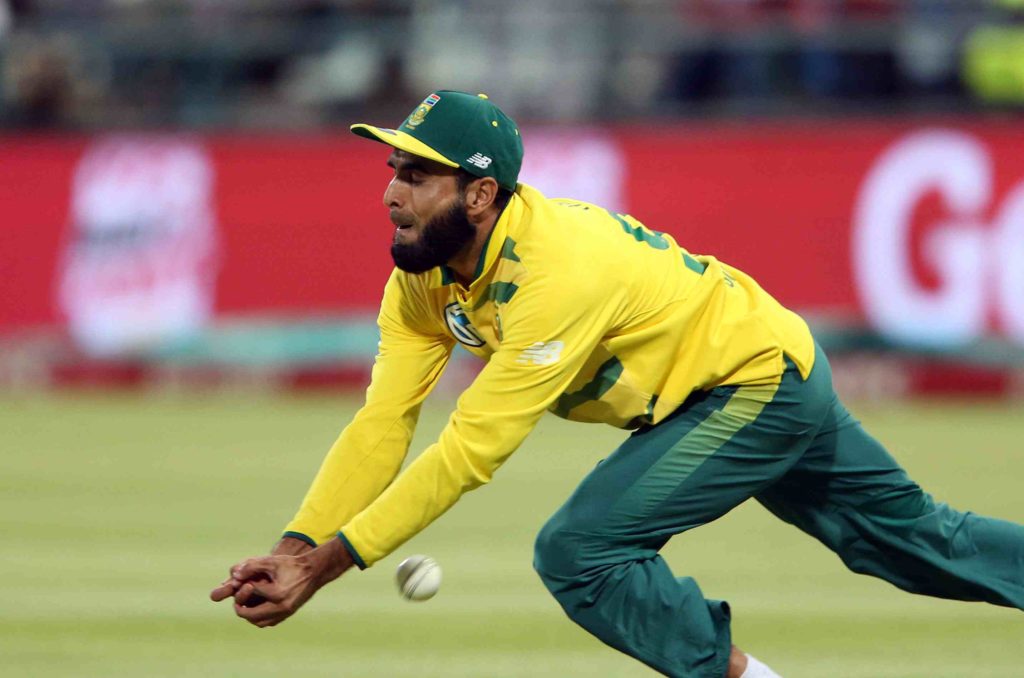Why was Kagiso Rabada the only South African bought at the auction?
At least 14 South Africans put their names in the hat for the IPL auction. Established Proteas such as Kagiso Rabada and Imran Tahir were expected to fetch substantial sums, while domestic hopefuls such as Christiaan Jonker and Rassie van der Dussen were hoping to turn their personal fortunes on its head.
By the end of a frantic day of paddle waving in Bangalore, Rabada was the only one whose hammer struck down with the word ‘sold’.
It must have been a nervous day for the 300-plus cricketers who put themselves on sale. Most were probably just waiting for that Whatsapp message from their mate or a Tweet from the masses to relay the good news. For the Saffas it was bad news, and in many cases, perplexing.
Imran Tahir’s base price was 50 lakh, or just over R1-million. That’s a tenth of the price that the Delhi Daredevils shelled out on Rabada. You could argue that India boast a plethora of quality spinners and don’t need a spinner to fill one of the four overseas spots on offer. But can they boast the No 1 ODI and T20 bowler in the world?
‘I don’t know what to say, but as long as I perform for South Africa I’m happy with myself,’ Tahir humbly told SACricketmag.com when he was asked about the inconceivable snub.
To enter into a political debate is always a risky route in sport, but could the complex and often hostile relations between India and Pakistan have anything to do with it? Tahir was born, raised and played for Lahore, the second largest city in Pakistan. I dare not delve further.
The cricketing explanation would be the fact that the ODI squad are heading up to England for their three-match ODI series over two weeks before the first match for a team building camp. It means that that the South Africans playing in the IPL will be missing as many as three group-stage games and the knockout games.
With players earning what is believed to be as much as $150 000 dollars just for playing one match, this is not going to go down well. So it begs the question, do the Proteas really need to spend that much time together for a team building camp? They’re a pretty settled unit at the moment; there’s no one new coming into that team, and the majority of them will be seeing each other during the IPL anyway.
Cricket South Africa and coach Russell Domingo, who has expressed his displeasure in the past at the amount of T20 cricket his players play, have made their decision final. One wonders whether that decision prevented Rabada from becoming a multi-millionaire, as opposed to a $750 000-aire.
As for the non-internationals, the old phrase ‘you’re only as good as your last game’ appears to ring true. English fast bowler Tymal Mills, restricted to playing T20 cricket only due to a back injury, is a very lucky lad indeed. He’s only played three T20 internationals, but he played them a month ago, and he played them in India. The result? He went for 24 times his base price – a staggering $1.8-million. How’s that for a bit of timing?
Billy Stanlake made his T20 International debut for Australia four days ago. That was enough to convince the Royal Challengers Bangalore to snap him up for the equivalent of half a million rand.
Warriors skipper Jon Jon Smuts would have been a decent candidate. Fresh from his debut T20 series with the Proteas, and boasting a bit of Caribbean Premier League experience, he would have been hopeful of his chances. Yet, he didn’t get so much as a starting bid at the auction. Oh, how different that could have been for the fickle bidders had he produced a big innings against Sri Lanka.
Just like Rilee Rossouw and Hashim Amla discovered last year, Kyle Abbott missed the mark with his hefty starting price of 150 lakhs. To put that into context, Rabada’s starting price was only 100. It put the bidders off. But then again, perhaps that was the minimum amount he considered to be worth it after entering a new pay bracket by going Kolpak.
The early departure to England has left the likes of Andile Phehlukwayo, Wayne Parnell, Lungi Ngidi and Farhaan Behardien wondering if things could have gone differently at the auction. Oh well, there’s always next year.
Photo: Carl Fourie/Gallo Images







